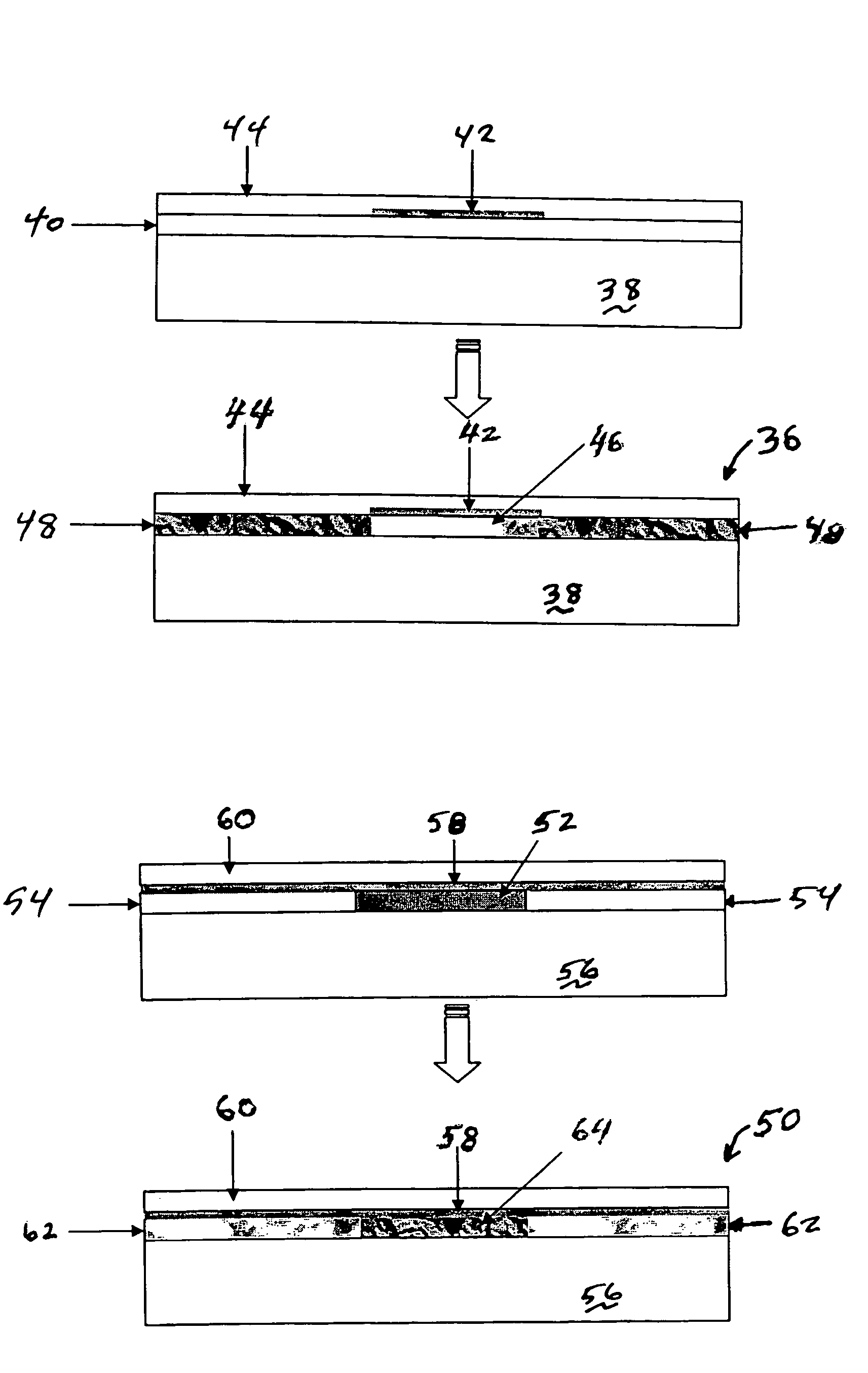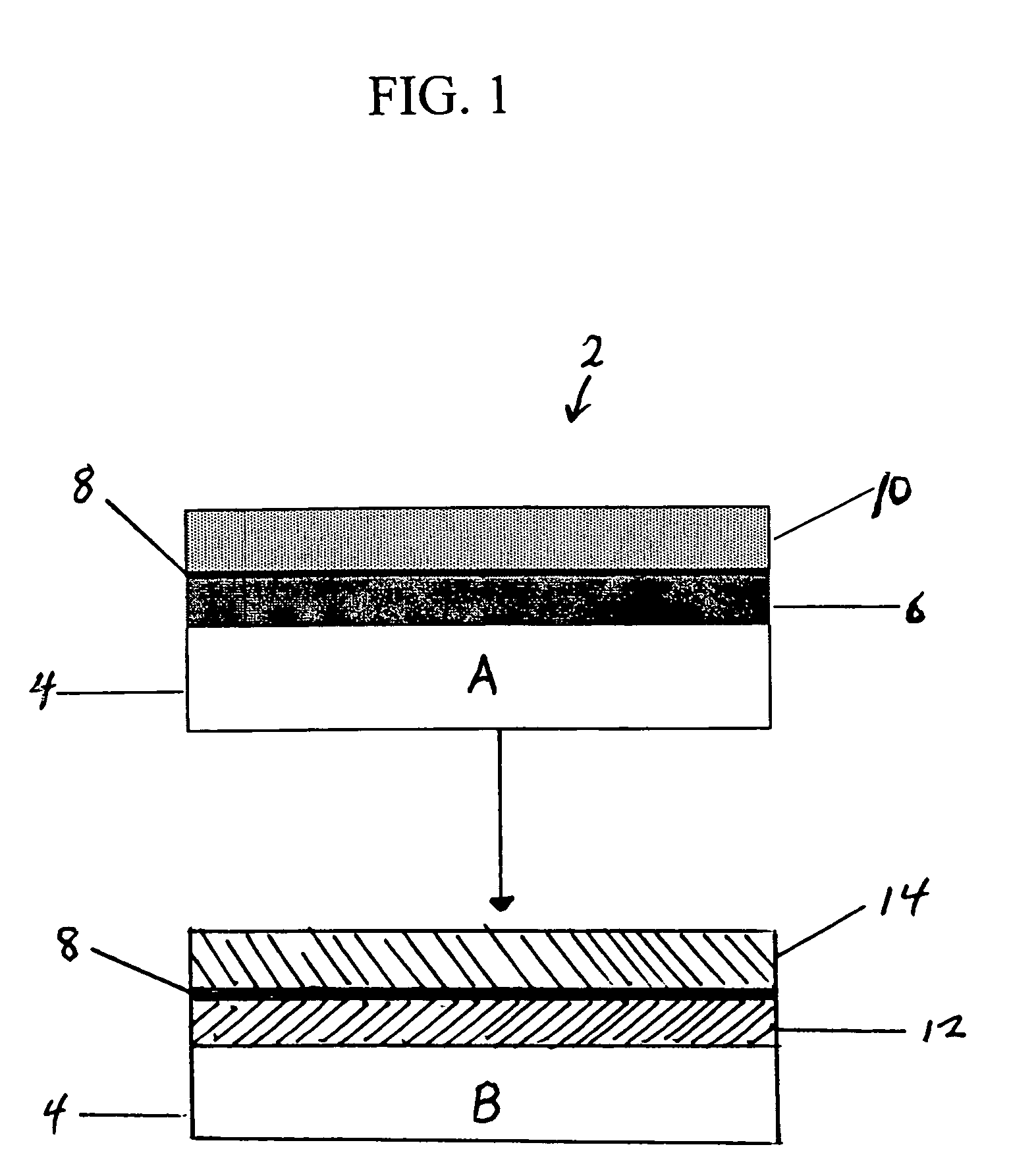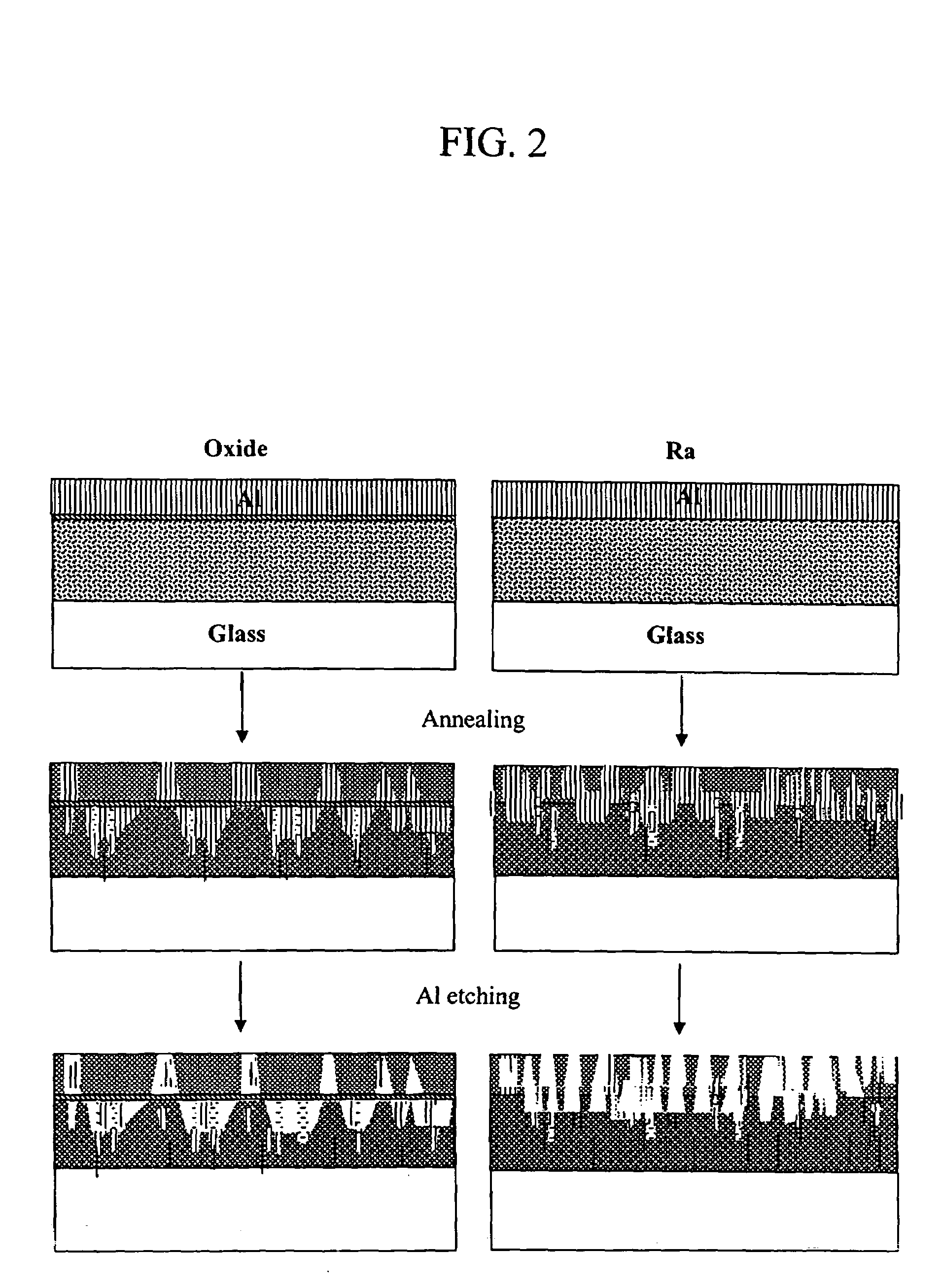Low temperature production of large-grain polycrystalline semiconductors
a polycrystalline semiconductor and low temperature technology, applied in the field of low temperature production of large-grain polycrystalline semiconductors, can solve the problems of requiring high annealing temperature and annealing time in tens of hours, and high annealing temperature can be destructive to various device constructions
- Summary
- Abstract
- Description
- Claims
- Application Information
AI Technical Summary
Benefits of technology
Problems solved by technology
Method used
Image
Examples
examples
[0052]In order to investigate the effect of a native SiO2 layer on MIC, two experiments were carried out. In the first experiment, three samples were prepared on Corning 7059 glass substrates in a multi-chamber plasma-enhanced chemical vapor deposition (PECVD) system. The samples consisted of 3000 Å thick undoped a-Si:H deposited on the glass substrate, which were then capped with 2000 Å thick sputtered Al. The base pressure prior to all depositions was in the range of 6×10−8 torr. For the first sample, the Al was deposited right after (RA) the completion of the a-Si:H deposition. The sample remained under vacuum during preparation so it was not exposed to the atmosphere. For the second sample (10 M), the a-Si:H layer was exposed to room ambient for 10 minutes to allow for some native oxide layer to form prior to aluminum deposition. For the third sample (2 D), the a-Si:H layer was exposed to room ambient for 2 days to form an even thicker native oxide layer. The oxide layer thickne...
PUM
 Login to View More
Login to View More Abstract
Description
Claims
Application Information
 Login to View More
Login to View More - R&D
- Intellectual Property
- Life Sciences
- Materials
- Tech Scout
- Unparalleled Data Quality
- Higher Quality Content
- 60% Fewer Hallucinations
Browse by: Latest US Patents, China's latest patents, Technical Efficacy Thesaurus, Application Domain, Technology Topic, Popular Technical Reports.
© 2025 PatSnap. All rights reserved.Legal|Privacy policy|Modern Slavery Act Transparency Statement|Sitemap|About US| Contact US: help@patsnap.com



